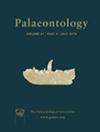理解生态位构建和表型可塑性是自然选择的原因
IF 2.3
2区 地球科学
Q1 PALEONTOLOGY
引用次数: 0
摘要
对许多进化生物学家来说,适应性差异导致种群中性状频率的变化,而自然选择则解释了适应性的进化。然而,将适应性差异视为原因更多的是科学惯例而非法令,对自然选择原因的分析有可能提供更丰富的进化解释。遗憾的是,由于历史的原因,人们一直认为发育的复杂性使得表型变异的起源不可预测,而且生态过程具有特异性,这些假设阻碍了对自然选择的发育基础进行详细分析。一个鲜为人知的后果是,依赖于选择的解释可能会掩盖进化中重要的特定因果模式。在这里,我将以生物体对环境的改变和调节("生态位构建",又称 "生态系统工程")以及对环境条件的发育可塑性反应("表型可塑性")为例,强调生物体的发育和活动是如何产生发育偏差的,而这些偏差往往以令人惊讶的良好调节方式共同决定了对选择的反应的性质。生态位的构建会使暴露于选择的表型变异产生偏差,往往会与塑性表达的形态特征产生共变轴。分类学上共享的发育机制会在不同种群间聚集,从而产生容易被忽略的统计规律性,因为造成适应性差异的发育原因目前还不是进化研究的核心。最近的理论和实验表明,生物体如何发育以及生物体做什么会导致并加强关键性状与适应性之间的关系,从而部分决定了自然选择的特征。这些发现对理解平行进化、宏观进化趋势和可进化性的变化具有重要意义。本文章由计算机程序翻译,如有差异,请以英文原文为准。
Understanding niche construction and phenotypic plasticity as causes of natural selection
For many evolutionary biologists, fitness differences cause trait frequency changes in populations, and natural selection explains the evolution of adaptations. Treating fitness differences as a cause, however, is more scientific convention rather than decree, and analyses of the causes of natural selection potentially afford richer evolutionary explanations. Unfortunately, the historical assumptions that the complexities of development leave the origins of phenotypic variation unpredictable, and that ecological processes are idiosyncratic, have hindered detailed analysis of the developmental bases of natural selection. A poorly appreciated consequence is that explanations reliant on selection potentially mask particular causal patterns important in evolution. Here, using examples of environmental modification and regulation by organisms (‘niche construction’, a.k.a. ‘ecosystem engineering’), and developmental plastic responses to environmental conditions (‘phenotypic plasticity’), I will highlight how the development and activities of organisms create developmental biases that co‐determine the nature of the response to selection, in an often surprisingly well‐regulated manner. Niche construction biases the phenotypic variation exposed to selection, often generating axes of covariation with plastically expressed morphological traits. Taxonomically shared developmental mechanisms aggregate across populations to generate statistical regularities that are easy to miss because the developmental causes of fitness differences are not currently central to the study of evolution. Recent theory and experiments suggest that how organisms develop and what organisms do cause and strengthen the relationship between key traits and fitness, thereby part‐determining the characteristics of natural selection. The findings have implications for understanding parallel evolution, macroevolutionary trends and variation in evolvability.
求助全文
通过发布文献求助,成功后即可免费获取论文全文。
去求助
来源期刊

Palaeontology
地学-古生物学
CiteScore
5.60
自引率
3.80%
发文量
43
审稿时长
6 months
期刊介绍:
Palaeontology publishes a wide variety of papers on palaeontological topics covering:
palaeozoology
palaeobotany
systematic studies
palaeoecology
micropalaeontology
palaeobiogeography
functional morphology
stratigraphy
taxonomy
taphonomy
palaeoenvironmental reconstruction
palaeoclimate analysis and biomineralization studies.
 求助内容:
求助内容: 应助结果提醒方式:
应助结果提醒方式:


